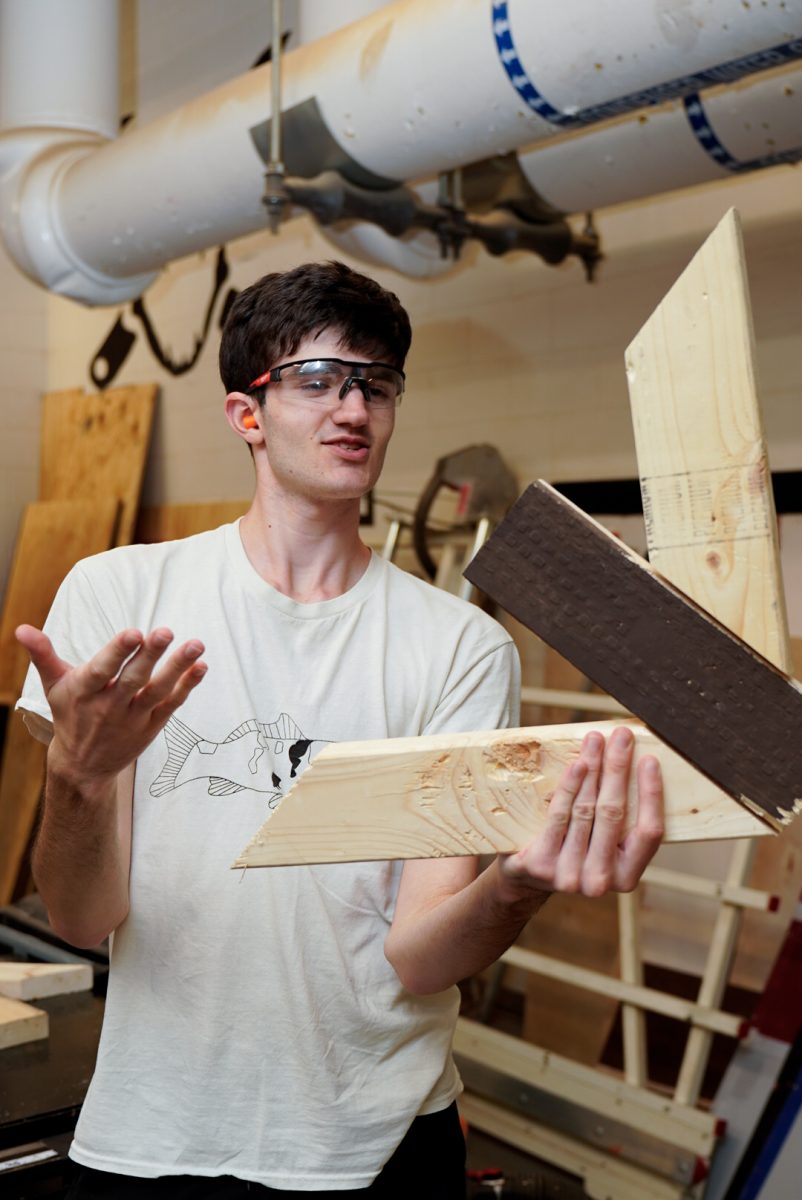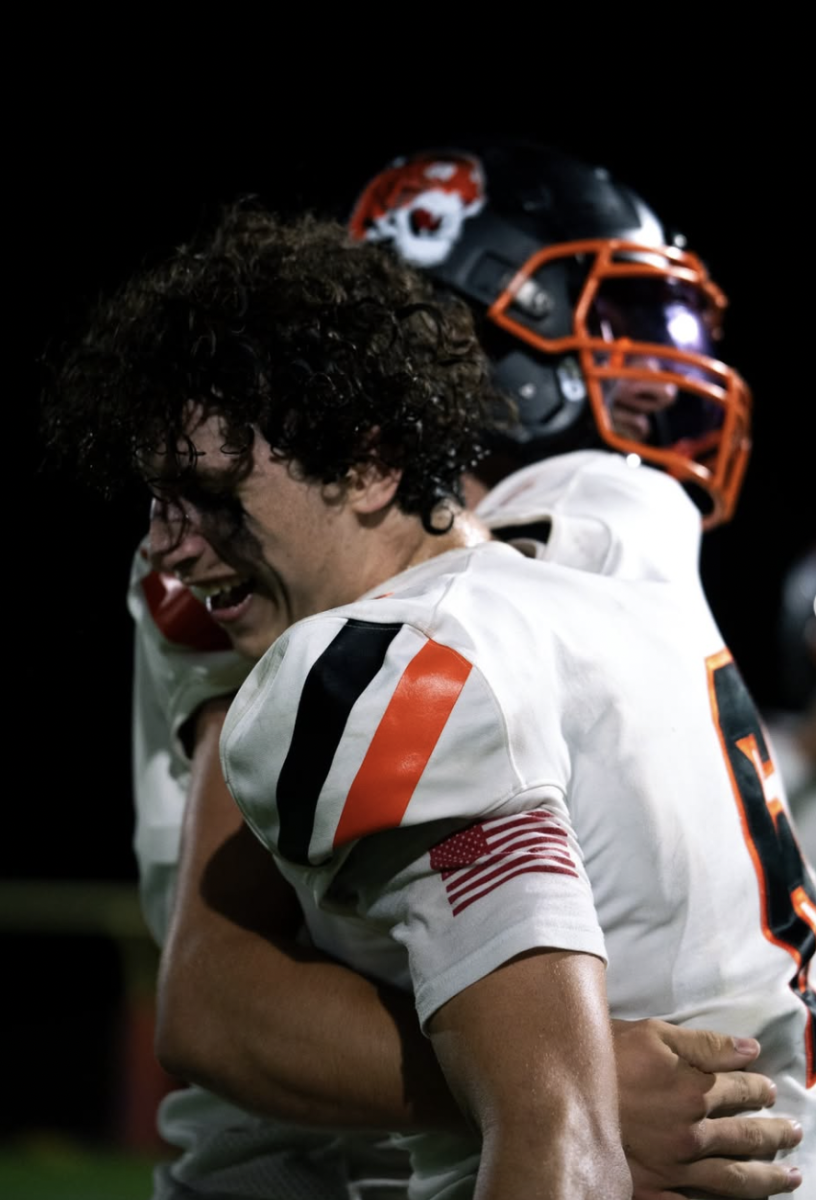 [/media-credit]
[/media-credit]
- Concussions are more prevalent in football, according to neuropsychologist Dr. Neil McGrath.
by Jay Feinstein and Gloria Li
“It’s part of the game…until it’s you,” Mario Manningham, a wide receiver for the New York Giants, once told The New York Times. Manningham was referring to the severity of concussions and how they do not get enough attention.
On July 19, 2010, the Massachusetts legislature passed a law that mandates how policies regarding concussion prevention for student-athletes should be enacted within all public schools in the State.
The law was put in place at the end of last spring, and this is the first complete season in which the policies are being used for all student-athletes.
The State law
The State’s new law has three main components, according to Dr. Neal McGrath, a neuropsychologist who served on the advisory committee that helped develop the regulations.
The first component requires students, parents and coaches to take an annual online education course on concussions. “It gives an overview of symptoms, risks and treatments of concussions,” he said. According to McGrath, who specializes in the evaluation and rehabilitation of traumatic brain injuries, two dozen states across the country require concussion education.
The second component of the law prohibits athletes with concussion symptoms from playing sports. “It basically establishes the rule ‘when in doubt, sit ’em out,’” McGrath said. A student must have a medical clearance in order to return to practice.
The third part requires that every MIAA high school and middle school develop a concussion management policy. It lays out what to do when a student is or may be concussed, McGrath said.
According to McGrath, one of the most important parts of the management policy is that it acknowledges that concussion victims may have a harder time at school and should receive academic accommodations if necessary.
The City law
Newton took the initiative one step further. This City requires all high school and middle school student-athletes, regardless of the sport level, to take the imPACT test, a computerized test that assesses a person’s attention, memory, processing speed and reaction time.
“When someone is taking the test, a few shapes might flash on the screen, and then a question will pop up asking them which shapes they remember seeing,” said athletic trainer and P.E. teacher William McAndrews.
Taken every two years, the test establishes a performance baseline, which is used for comparison later, according to McAndrews. The test gives insights that CT scans and MRI scans cannot.
“When you get an ankle sprain, you can see the swelling by just looking at it. You can’t see that in a concussion. You need the imPACT test for that,” he said.
The City began paying for this school’s tests in the spring, according to Commissioner of Health and Human Services Dori Zaleznik.
The cost decreases when a city purchases a site license and orders the tests for all student-athletes instead of having each school order them on its own, she said.
Sports Concussion New England in Brookline is the organization that sells the tests to this school, according to Zaleznik.
At the school level
This school required the concussion test before the City mandated it, according to athletic administrative assistant Donna Benoit.
According to McAndrews, the testing at this school was started during the winter of 2008 for several high-risk sports including hockey, football and lacrosse, but now, this school provides tests for every sport.
“We started it back then because we thought that it was the right thing to do. It had nothing to do with laws requiring us to implement it,” McAndrews said.
According to Jonathan Frieze, the former South booster club president, South began testing three years ago, shortly before this school began testing.
“I brought the imPACT tests to the school after I read an article in The Boston Globe.”
“I told them that they show how the brain is operating both before and after a concussion, and how they’re a valuable tool for showing doctors the severity of concussions,” he said.
According to Frieze, the school was interested, but it did not have enough money to fund the testing, so the South booster club had to fund it for the first two years.
“We met with the City and pushed the idea that imPACT testing be implemented across the City, and ultimately, the City decided to fund it for all the high schools and all the middle schools,” he said.
The City first began funding it at this school this spring, and the athletic department at this school funded it before then.
School procedure
At this school, coaches follow a strict state-wide protocol that they use after a student-athlete receives a head injury. First, athletes are removed from play. Then, the mental state of athletes is evaluated through the posing of a series of questions, according to McAndrews.
“I usually ask them questions that allow me to tell whether it’s a medical emergency or if it’s not too serious,” he said.
Through this process of examining the symptoms and questioning the student, a conjecture can be made by either coaches or trainers regarding the distinction between a concussion and a mere hit on the head that is not permanently damaging to the patient, he said.
If the injury is a concussion, athletes have to wait until at least 24 hours after the symptoms go away to start running again.
Depending on the case, student-athletes are sometimes required to wait even longer before beginning sports-related activities again. If symptoms do not return, they are then allowed to participate in contact practices.
The severity of concussions
Concussions can cause various types of amnesia and memory loss, and if a student-athlete receives a concussion and gets another before they fully recover, it could potentially become life-threatening, McAndrews said.
“The brain damage from a concussion could be permanent, so it is important that people have the time to recover,” he said.
“I would never want an alumni when they’re 45 or 50 years old to have trouble caring for their child because they had neglected to be tested and a concussion wasn’t detected when they were involved in high school sports,” he said. “It’s just not worth it.”
McAndrews said, “I tell kids: this is your brain. Don’t mess with it.’”
New knowledge about concussions
Attitudes toward concussions have changed over time, Frieze said.
Ten years ago, “nobody knew the extent of the injuries or what was truly happening.”
According to McAndrews, “they used to be that someone could go back and play as soon as you physically could, even if that person was still recovering from a concussion.”
There has been a dramatic change in attitudes about concussions since then. “We deal with it more seriously now that we know more about the long term effects of concussions,” McAndrews said. “The issue has become more publicized and critical.”
According to McAndrews, in the past, people did not always report their concussions. With the new emphasis on teaching about concussions, there have been more incidences reported.
“Now that kids are more educated, they are more likely to say something about a concussion,” he said.









































